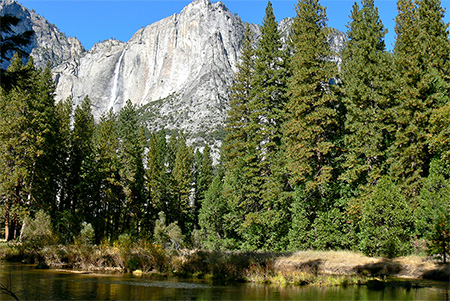Forests are beautiful, serene landscapes, which is one of the reasons millions of Americans choose them as vacation spots every year. They offer great terrain for camping and enjoying all the beauty natural wilderness has to offer. But forests can also be dangerous places. If you are not prepared to survive in a forest for extended periods, you could quickly find yourself in serious trouble if lost or separated from your group. The key to forest survival is knowing how to read signs in the terrain to understand your surroundings. It’s crucial to know the right steps to take to maximize your resources and survive until you can reorient yourself or help arrives.
Stop & Think
First, when you realize you are lost and potentially in a survival situation, stop and think. In every survival situation, one of the most important actions you can take is to remain calm and aware.  As best as you can, attempt to retrace your steps—but be careful not to waste time following false leads or walking in circles.
As best as you can, attempt to retrace your steps—but be careful not to waste time following false leads or walking in circles.
Orient Yourself
Whenever possible, orient yourself by using landmarks such as mountain ranges to get your bearings. During the day, you can use the stick and shadow method to find the cardinal directions. Find a sunny, flat clearing, and drive a stick into the ground. Mark the end of the stick’s shadow with a rock. Wait fifteen minutes until the shadow moves a few inches. Mark the new shadow point again. Repeat this process several times until you have a straight line. Since the sun moves from east to west, the first mark will point west, and the last will point east.
Finding Water
Water is crucial for survival. Springs provide the best clean water, followed by fast-moving streams and rivers. If you have water purification tablets, use them. Otherwise, sterilize water by boiling it. Dew can be a good source of safe water, but it is hard to gather effectively. Collecting rainwater is one of the safest ways, although it depends on weather conditions. In alpine areas, snow can be melted for water, but ensure it is fully melted to avoid lowering your core temperature.
Starting Fire
A fire is essential for boiling water and staying warm at night. Gather plenty of firewood—dead branches and dry organic material work best. Avoid green or damp wood, which creates smoky, low-temperature fires. If you have a fire starter, use it. Otherwise, start a fire using the bow and stick method, though it is difficult and time-consuming. To be prepared, always carry strike-anywhere matches.
Find Shelter
Shelter is vital if you're in the forest for more than a day. Look for natural shelters such as caves, hollows, or tree overhangs. Large trees can offer elevation and protection from predators. If none of these are available, you may need to build a shelter using nearby resources.
Finding Food
You will need food to maintain energy, especially if stranded for days. If near a body of water, fishing provides protein. Insects and arthropods can also be rich protein sources. Look for bird nests, especially in spring, for eggs. It's essential to know which plants are edible. Ultimately, survival depends on your skills, knowledge of the terrain, and quality of your gear. If you have a first aid kit, water purification tablets, food rations, and portable shelter, you can survive longer in a forest environment.










